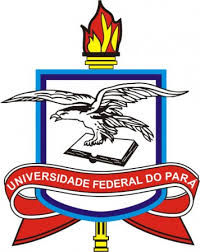预约演示
更新于:2025-09-09

Universidade Federal Do Para
更新于:2025-09-09
概览
标签
神经系统疾病
心血管疾病
小分子化药
脂质体药物
关联
1
项与 Universidade Federal Do Para 相关的药物靶点- |
作用机制 神经保护剂 |
在研适应症 |
非在研适应症- |
最高研发阶段临床前 |
首次获批国家/地区- |
首次获批日期- |
29
项与 Universidade Federal Do Para 相关的临床试验NCT06967493
"Amazonian Dance for Parkinson": a Protocol Study for a Randomized Clinical Trial on Motor and Non-motor Symptoms of People With Parkinson's.
This randomized controlled trial aims to evaluate the effects of a 12-week Amazonian dance program on cognitive and motor symptoms in people with Parkinson's disease (PD), comparing outcomes between participants in the intervention and those in an alternative control intervention.
开始日期2025-08-04 |
申办/合作机构 |
NCT07027566
Effect of an Experimental Cannabidiol Gel on Tooth Sensitivity Induced by Tooth Bleaching
The goal of this clinical trial will be to evaluate the effect applying an experimental gel based on cannabidiol oil (CBD) on tooth sensitivity induced by tooth bleaching with 35% hydrogen peroxide (HP). Volunteers will be selected and allocated to the following groups: GP - placebo gel, GCBD - experimental cannabidiol gel and GKF - Potassium Nitrate and Sodium Fluoride Gel. In each group, the corresponding desensitizing gel will be applied to on the teeth for 10 minutes. All groups will then undergo in-office whitening treatment with 35% hydrogen peroxide. Patients will be instructed to record tooth sensitivity on a daily basis during the 21 days of follow-up. Pain intensity will be measured using a visual analog scale (VAS), while the risk of developing sensitivity will be recorded after each session of the whitening procedure, with two response option.
开始日期2025-07-25 |
申办/合作机构 |
NCT06614764
Effect of Andiroba on Control of Post-whitening Tooth Sensitivity: a Randomized Clinical Trial
This randomized clinical trial will evaluate the effect of an experimental gel containing andiroba oil (Carapa guianensis) in reducing postoperative tooth sensitivity caused by bleaching with 35% hydrogen peroxide. Volunteers in this study will be randomized into 3 different groups - PG (placebo gel), KF2G (potassium nitrate gel) and AG (andiroba gel). Groups KF2G and AG will receive treatment with potassium nitrate desensitizing gel and the experimental andiroba gel, respectively. This will be applied to the buccal surfaces of the central incisors, lateral incisors, canines and upper and lower premolars, with a rubber cup in an active manner, for 10 minutes. Group GP will receive the application of a placebo gel (without active ingredient), under the same conditions described for the other groups. Subsequently, all groups will undergo in-office bleaching treatment with 35% hydrogen peroxide. Post-bleaching sensitivity will be collected using a form consisting of the visual analogue scale (VAS). Color measurement will be performed with a spectrophotometer at two times: baseline (T0) and one week after the 3rd bleaching session (T1).
开始日期2024-10-01 |
申办/合作机构 |
100 项与 Universidade Federal Do Para 相关的临床结果
登录后查看更多信息
0 项与 Universidade Federal Do Para 相关的专利(医药)
登录后查看更多信息
8,481
项与 Universidade Federal Do Para 相关的文献(医药)2026-02-01·PARASITOLOGY INTERNATIONAL
Unveiling hidden diversity in Cosmetocleithrum (Monogenoidea: Dactylogyridae) from thorny catfishes (Doradidae) endemic to South America: Two new species, morphological variation, and molecular phylogenetic insights
Article
作者: Balbuena, Juan A ; Luque, José L ; Maia, Antônio A M ; Domingues, Marcus V ; Adriano, Edson A ; Soares, Geusivam B
The Cosmetocleithrum represents the most diverse group of monogenoids parasitizing Neotropical doradid catfishes. In this study, based on morphological and molecular data, we describe two new species, Cosmetocleithrum guamaensis n. sp. and Cosmetocleithrum taeniophallum n. sp., and assess their phylogenetic relationships within the Dactylogyridae using partial 28S rDNA sequences. Our analyses support the validity of these new taxa and suggest their phylogenetic affinity with Cosmetocleithrum species parasitizing auchenipterid catfishes. Additionally, we confirm the presence of Cosmetocleithrum falsunilatum and Cosmetocleithrum bulbocirrus in Megalodoras uranoscopus and Pterodoras granulosus, respectively, with C. falsunilatum exhibiting notable morphological variation across river basins, possibly influenced by environmental factors. Our phylogenetic results corroborate previous studies indicating two distinct Cosmetocleithrum lineages, one exclusively associated with doradids and another with both doradids and auchenipterids, with weak support for the genus' monophyly. Furthermore, we discuss morphological diversity within Cosmetocleithrum, highlighting significant variation in key diagnostic features, including haptoral structures, copulatory complex morphology, and vaginal opening orientation. These findings reinforce previous hypotheses suggesting that Cosmetocleithrum may not constitute a natural group and that taxonomic revisions are needed. The limited molecular data available for Cosmetocleithrum species (with only 13 out of 31 described species studied) and the disparity between the number of known doradid hosts and those surveyed for monogenoids highlight the urgent need for further integrative taxonomic and phylogenetic studies. This approach will be crucial for providing valuable insights and advancing our understanding of the complex evolutionary puzzle of one of the largest genera of monogenoids parasitizing Neotropical Siluriformes.
2026-01-01·SPECTROCHIMICA ACTA PART A-MOLECULAR AND BIOMOLECULAR SPECTROSCOPY
Pressure-induced vibrational changes in [Cu(bipyridine)2(Cl)]+ complex: Raman spectroscopy and DFT mode assignments
Article
作者: Lima, Ricardo J C ; Nogueira, Carlos E S ; Dos Santos, Carlos A A S ; Oliveira Neto, João G de ; Façanha Filho, Pedro de F ; da Silva, Luzeli M ; Abreu, Kamila R ; Feio, Waldeci P ; Dos Santos, Adenilson O
Understanding how metal-organic complexes behave under extreme conditions is crucial for designing advanced materials. Here, we present a comprehensive investigation of the [Cu(Bip)2(Cl)]+ complex. Its structural properties were characterized by powder X-ray diffraction with Rietveld refinement. Additionally, the study incorporated High-pressure Raman spectroscopy (up to 7.5 GPa), which was complemented by density functional theory (DFT) calculations for accurate vibrational mode assignment, alongside Hirshfeld surface analysis. Our results reveal a gradual conformational phase transition in the [Cu(Bip)2(Cl)]+ complex occurring between 1.0 and 4.0 GPa. This transition is primarily driven by changes in intermolecular interactions, including the emergence of a new CH stretching mode and subtle variations in the CuCl stretching mode. Notably, the molecular framework of the complex remains remarkably rigid, with only minimal pressure-induced shifts observed in its internal vibrational modes up to 7.5 GPa. This contrasts with pure pyridine, which undergoes significant structural changes under pressure. The enhanced rigidity of [Cu(Bip)2(Cl)]+ stems from the distinct nature of its intermolecular forces: while hydrogen bonds in pyridine contribute to great mechanical strength, the van der Waals forces in [Cu(Bip)2(Cl)]+ promote compressibility, enabling a progressive conformational transition rather than abrupt structural collapse. The structural reversibility and stability of the complex under pressure highlight its potential for applications in variable-pressure environments, such as sensors and optoelectronic devices.
2025-12-31·STRESS-THE INTERNATIONAL JOURNAL ON THE BIOLOGY OF STRESS
Chronic stress triggers impairments of the redox status of salivary glands associated with different histological responses in rats
Article
作者: Lima, Rafael Rodrigues ; Amado, Lílian Lund ; Aragão, Walessa Alana Bragança ; Né, Yago Gecy de Sousa ; Souza-Monteiro, Deiweson ; Chaves-Neto, Antonio Hernandes ; Mendes, Paulo Fernando Santos
Stress occurs as a reaction to mental and emotional pressure, anxiety, or scarring. Chronic stress is defined as constant submission to these moments. It can affect several body systems, increase blood pressure, and weaken immunity, thereby interfering with physiological health processes. Thus, this study aims to evaluate the effects of chronic stress on the redox status and histomorphological parameters of salivary glands. Thirty-two albino Wistar male rats were randomly divided into two groups: chronic stress and control. Chronically stressed animals were subjected to a restraint protocol by introducing them into a polyvinyl tube for 4 hours daily for 28 days, allowing immobilization of their movements. Subsequently, the animals were euthanized for further collection of the parotid and submandibular salivary glands. The redox state of the glands was evaluated using the antioxidant capacity against peroxyl radicals (ACAP) and thiobarbituric acid reactive substances (TBARS) assays. Histological analysis was performed through morphometry of the tissues stained with hematoxylin and eosin and histochemical through picrosirius red staining. Both the parotid and submandibular glands of stressed rats exhibited oxidative stress due to a decrease in ACAP and an increase in TBARS levels. However, the parotid glands are more susceptible to harmful changes in the tissue, such as an increase in the stromal area and in the collagen area fraction, decrease in the acinar area, and smaller size of the acinus and ducts. Our results suggest that chronic stress may cause harmful modulation of the redox state of the salivary glands, with different histological repercussions.
100 项与 Universidade Federal Do Para 相关的药物交易
登录后查看更多信息
100 项与 Universidade Federal Do Para 相关的转化医学
登录后查看更多信息
组织架构
使用我们的机构树数据加速您的研究。
登录
或

管线布局
2025年11月29日管线快照
管线布局中药物为当前组织机构及其子机构作为药物机构进行统计,早期临床1期并入临床1期,临床1/2期并入临床2期,临床2/3期并入临床3期
临床前
1
登录后查看更多信息
药物交易
使用我们的药物交易数据加速您的研究。
登录
或

转化医学
使用我们的转化医学数据加速您的研究。
登录
或

营收
使用 Synapse 探索超过 36 万个组织的财务状况。
登录
或

科研基金(NIH)
访问超过 200 万项资助和基金信息,以提升您的研究之旅。
登录
或

投资
深入了解从初创企业到成熟企业的最新公司投资动态。
登录
或

融资
发掘融资趋势以验证和推进您的投资机会。
登录
或

生物医药百科问答
全新生物医药AI Agent 覆盖科研全链路,让突破性发现快人一步
立即开始免费试用!
智慧芽新药情报库是智慧芽专为生命科学人士构建的基于AI的创新药情报平台,助您全方位提升您的研发与决策效率。
立即开始数据试用!
智慧芽新药库数据也通过智慧芽数据服务平台,以API或者数据包形式对外开放,助您更加充分利用智慧芽新药情报信息。
生物序列数据库
生物药研发创新
免费使用
化学结构数据库
小分子化药研发创新
免费使用

